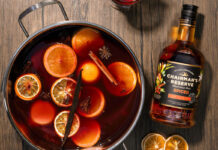Scotch whisky has something for everyone, firms say
With such a wide variety of flavours on offer, whisky is a spirits category that should be able to offer something to suit all tastes.
That’s what some of the firms behind Scotland’s national drink seem to think – and they reckon there are a few simple steps publicans can take to ensure their whisky range appeals to a larger audience.
Katy Macanna, UK brand manager at Ian Macleod Distillers, whose brands include Glengoyne and Tamdhu, said now is a good time to be pushing Scotch, with single malts said to be performing particularly well.

“Single malt Scotch whisky has continued to see a rise in popularity in the on-trade,” she said.
“The modern consumer appears to act much more positively to experimentation and premium products, so single malt fits this demand extremely well.”
Macanna suggested that publicans should shoot for variety when building a whisky range.
“The key is for Scottish licensees to cater for the wide variety of palates, preferences and tastes of the modern consumer,” said Macanna.
“The best way to do this is to segment the whisky offering by flavour profile, rather than simply by region or origin.”
Euan Mitchell, managing director of Isle of Arran Distillers, agreed that operators “should consider stocking a diverse range” and said this should include “limited editions that will draw the eye of the customer”.
Mitchell added that the “heightened consumer trend for provenance and authenticity” is driving a greater interest from consumers in the background of their food and drink, including the malts and blends on the back-bar.
To meet this demand, Mitchell said bar staff “should be knowledgeable enough to advise these customers on choices they may not have considered”.
“This is especially important with whisky where features such as age, blend, region and palate are a key factor,” he said.
Mitchell suggested that by “keeping up-to-date with drinks trends operators can “ensure that staff are on the ball”.
Making sure staff are clued up on the whisky range was also highlighted by Ashley Moore of Diageo as an important step towards improving sales.
“Get your staff involved – it will fuel their interest in the drinks you serve and make them really feel part of the business,” said Moore.
“If your staff are inspired about what they’re serving, they will be able to make more engaging recommendations to customers, equalling more profit for your outlet.”
Another way in which licensees can broaden the appeal of whisky is through cocktails, suggested Macanna.
She said mixed drinks can serve as “a good way to introduce the new consumer to whisky”, although she also warned that such serves should be “simple cocktails, which build on a couple of key flavours of the whisky rather than masking them”.
Vicky Hoey, head of marketing, dark spirits, at Pernod Ricard UK, argued that whisky is particularly well suited for use in cocktails.
“Whisky has definitely benefited from the popularity of cocktails, as the complexity of flavour found within whisky can really add to the finished drink,” she said.
“In the CGA Mixed Drinks report, whisky, specifically Scotch, was identified as one of the top five trends in the on-trade with CGA highlighting the revolution that was happening both in terms of new and imaginative serves and a revival of the classics such as the whisky sour.”
Hoey added that there are still “significant opportunities” for whisky-based cocktails in the trade, with many outlets still not offering any.
Visibility is vital to growing cocktail sales, according to Moore at Diageo.
“Ensure cocktail menus are interesting and visually attractive with enticing images and appealing descriptions,” said Moore.
“Choosing a cocktail can be a little daunting for some consumers, particularly men.
“Adding a small glass icon to show how the drink will be presented will help new consumers into the category make an informed choice around long or short drinks, and those in tall glasses versus Martini glasses.”



















